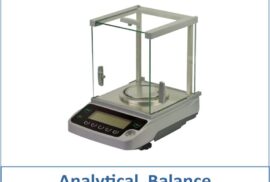HOW TO TROUBLESHOOT A LOAD CELL

The objective of this Technical Note is to perform a simple check on load cells to identify troubleshooting of a load cell in the field by using simple instrumentation as a millimeter and a known test load.
Visual Inspection
The first step is a visual inspection for detecting a visual defect (or change) in respect of a new load cell. Check the following:
Inspect the Load Cell general appearance: It must be clean without dirt and corrosion. Inspect the Sealing: It must isolate the internal circuits from moisture or other contaminants. Silicone or metallic covers must remain intact, without cuts, impacts, corrosion or holes.
Inspect the Cable: It must keep the original length, without damages as cuts, twisting. Inspect the Cable gland: It must be without manipulation.
Signal Tests
The objective in verify if output signals delivered by the load cell are coherent. Connect load cell excitation wires +IN (red) and –IN (blue) to the power supply of the electronic indicator used on the scale, and let the signal wires +OUT (green) and –OUT (yellow) to the air, not connected. Then take note of the following measures:
Power supply voltage (V)
Verify that an effectively correct supply voltage is delivered to the load cell, measuring voltage directly to the load cell wires +IN (red) and –IN (blue).
Zero balance or Output signal without load (mV/V)
This test is effective to detect if the load cell is submitted to permanent deformation due to mechanical overloads, impacts or hits. This test is also useful for detecting if there is moisture or any isolation fail that makes signal unstable.
Put the load cell in working position without any dead load on it, and read the mV output signal in output wires +OUT (green) and –OUT (yellow). The output signal must be stable and have a value inside manufacture tolerances: ±2% of 2mV/V = ±0,04 mV/V; if power supply is 10V then it will be inside ±0,4 mV.
The load cells can normally work with zero shifts of around 10%, so the scale can normally be recalibrated when the zero shift of the load cell remain inside ± 0,2 mV/V; if power supply is 10V then it could be inside ± 2 mV.
Output signal with load or sensitivity (mV/V)
Put the load cell in working position and apply a known test load, at same time read the output signal in mV on wires +OUT (green) and –OUT (yellow). Due to sometimes it is difficult to have proper test weights on the installation site, maximum of following condition will be tried:
Signal growing in correct sense. Apply a force (even by hand) to see if signal moves in the correct positive sense.
Signal stability: Put or hang a static load and see signal stability, normal weighing systems shows stability better than +0,0002 mV/V (+0,2 microV/V).
Sensitivity (mV/V). Apply a kwon test weight La (kg) on the load cell, signal must increase the following quantity:
NET OUTPUT = Lf – Li (mV)
Where,
Lf = Reading in mV on output signal after apply test weight. Li = Reading in mV on output before apply the test weight.
NET OUTPUT must be around ( 10%) to the theoretical expected out put calculated as follows:
NET THEORETICAL OUTPUT: (mV) = Sn x Va x La / Ln
Where,
NET THEORETICAL OUTPUT = Theoretical difference in mV on the output signal after and before apply a known test weight of value La kg.
Sn (mV/V) = Load cell Nominal Sensitivity in mV/V = 2 mV/V
As an approximation it is used the theoretical value of 2 mV/V. Exact value depends on each load cell, and is normally between 1,8 a 2,2 mV/V. In the case of exact value is known (see if load cell label give this value) could be introduced in the formula as better approximation.
Va (V) = Power supply voltage in Volts. Use the exact value measured directly on excitation wires +IN (green) y –IN (black).
La (kg) = Known test weight value applied to the load cell in kg
Ln (kg) = Load cell nominal capacity in kg (see load cell label).
Electrical Circuit Test
Objective is to verify if internal load cell electrical circuit keeps its original value. When any component fails, normally change its value, and thus their electrical resistance also change. On this procedure resistance and isolation will be read with all the load cell wires in open circuit, or the air.
Input resistance
Read the electrical resistance in Ohms between excitation wires +IN (red) y –IN (blue). The obtained value must be inside specified tolerances on data sheet. We have different standards, depending on load cell model, but in general are 400 30 Ohm or 800 30 Ohm.
Output resistance
Read the electrical resistance in Ohms between signal output wires +OUT (green) y –OUT (yellow).
The obtained value must be inside specified tolerances on data sheet. We have different standards, depending on load cell model, but in general areb 350 5 Ohm or 700 5 Ohm.
Isolation resistance
The load cell´s strain gauge circuit must be isolated from the load cell metal body and from the cable shield. Isolation problems are normally caused by mechanical stress on load cell cable or wires (internal or external) or by water or corrosive products. Isolation failure can cause reading instability.
Try to see if the following isolation resistances are good:
- Isolation Circuit to Metal body: The resistance between all the load cell “color” wires tied together and the load cell metal body.
- Isolation Circuit to Shield: The resistance between all the load cell “color” wires tied together and the cable shield.
The Isolation resistance should be 500 mega ohms or higher. This measurement must be done with mega ohmmeter, and should not put over 50 volts to prevent load cell damage. In case of a mega ohmmeter is not available, it is important to make same measure with a standard ohmmeter on the maximum scale (20 Mohm range) to tray to detect isolation problems.
Stability to Small Impacts Test
Connect directly the Load Cell to a power supply, or preferable a weighing indicator. Disconnect all the rest of load cells in case of a multi load cell system.
Connect the multi-meter to +OUT (green) and –OUT (yellow) wires and apply little impacts to the load cell, you can use a small hammer or screw driver for example, take care to do not overload the load cell, or damage any component.
Observe the readings, on the Voltmeter, of the load cell Output before and after to apply the impacts. After several of impacts the output readings must remain stable at same values, returning to original values. Erratic readings could indicate an electrical connection failure or damage in a component.
Note: The above information and tests are done under the intention of helping in troubleshooting finding of a load cell in an installation. They are simplified tests, using simple tools and they are not determinant for detect all type of fails on load cells and neither to evaluate load cell specifications. For obtaining better results this could be only done by using many specific accurate instruments and tools by experts.
We will ensure that your equipment is both accurate and compliant. We offer re-verification of weighing equipment used for trade as well as standard accredited calibration services.




